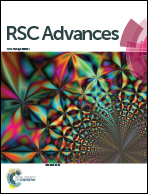Hole-transport-material-free perovskite solar cells based on nanoporous gold back electrode†
Abstract
Easily fabricated, directly transferred thin nanoporous gold was first used as a back electrode for hole-transport-material-free perovskite solar cells. In order to infiltrate CH3NH3PbI3 into the pores of mesoporous layers and the nanoporous gold back electrode, three ways, namely one-step spin-coating deposition, sequential deposition, and two-step spin-coating deposition were introduced to fabricate CH3NH3PbI3. The devices containing well infiltrated CH3NH3PbI3 show the highest power conversion efficiency of 7.99%.


 Please wait while we load your content...
Please wait while we load your content...